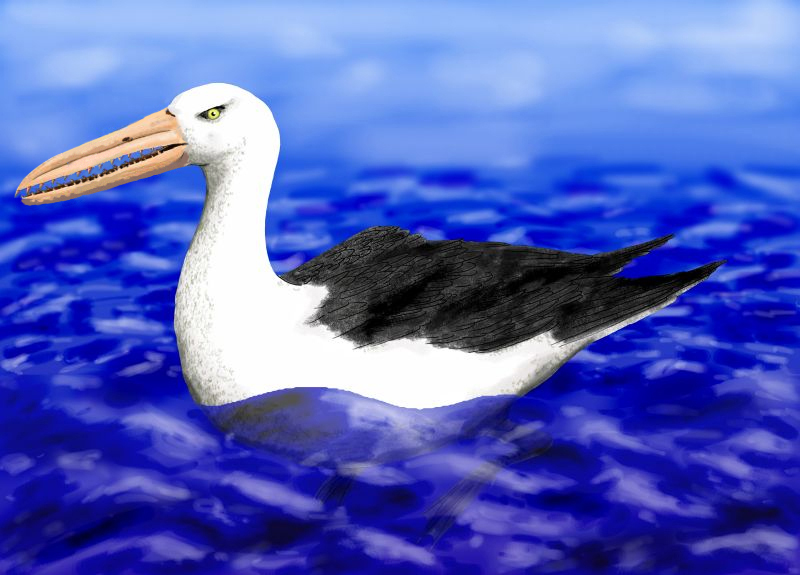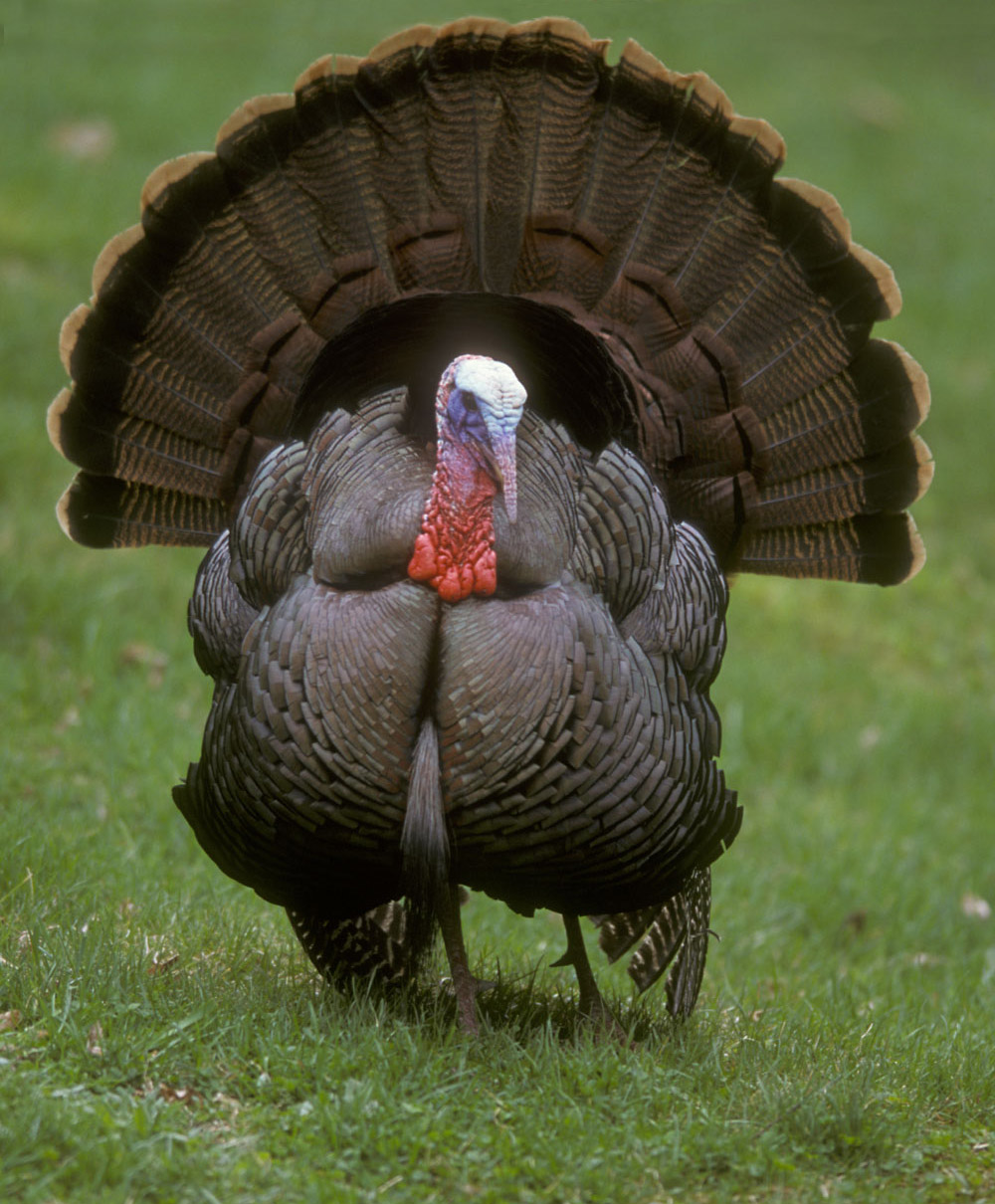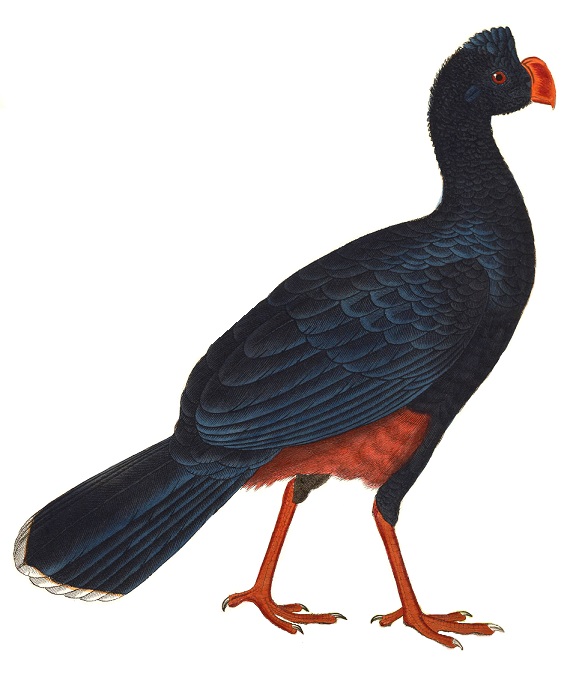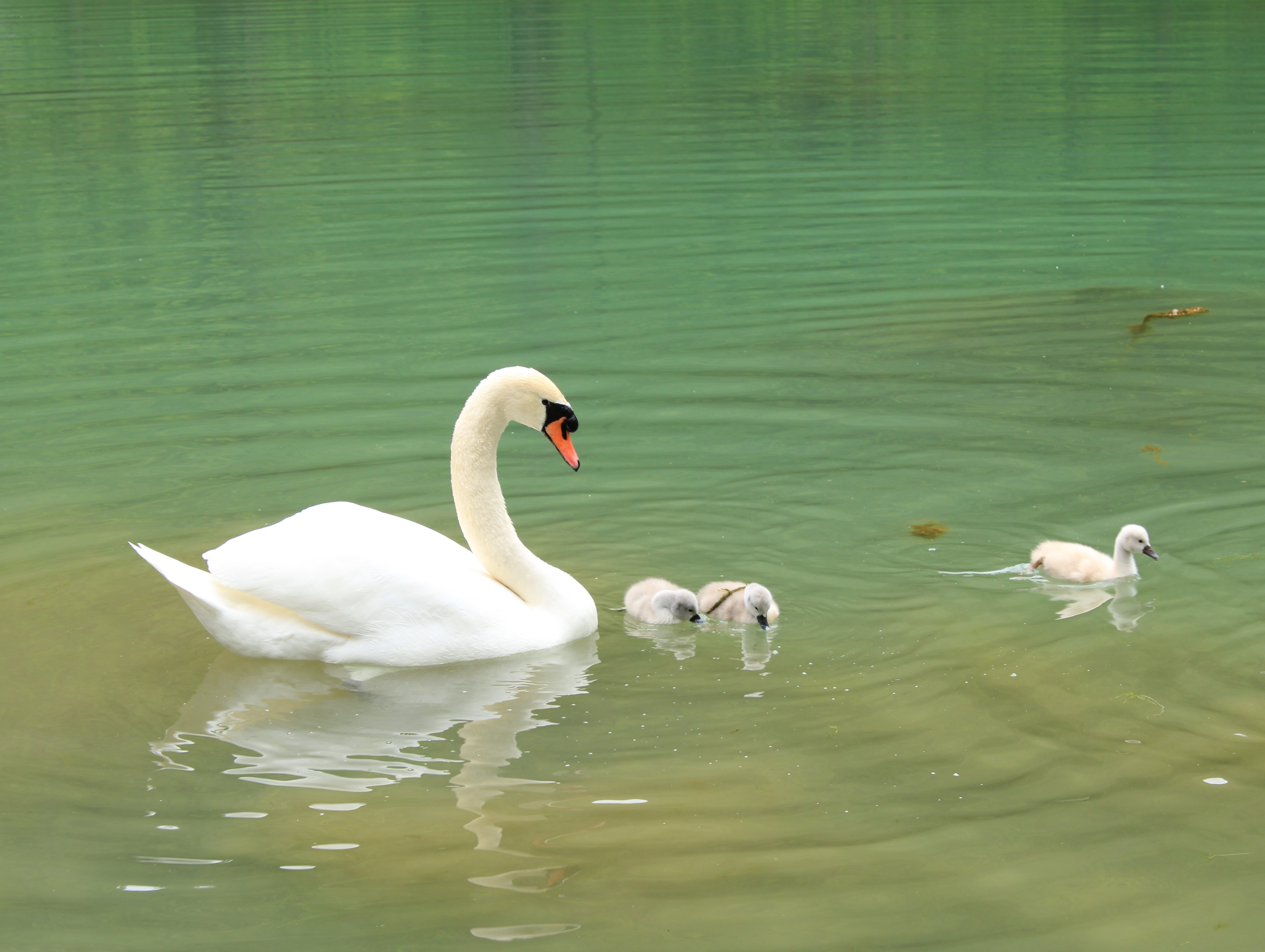|
Anseriformes
Anseriformes is an order (biology), order of birds also known as waterfowl that comprises about 180 living species of birds in three families: Anhimidae (three species of screamers), Anseranatidae (the magpie goose), and Anatidae, the largest family, which includes over 170 species of waterfowl, among them the ducks, goose, geese, and swans. Most modern species in the order are highly adapted for an aquatic existence at the water surface. With the exception of screamers, males have Penis#Birds, penises, a trait that has been lost in the Neoaves, the clade consisting of all other modern birds except the galliformes and paleognaths. Due to their aquatic nature, most species are web-footed. Evolution Anseriformes are one of only two types of modern bird to be confirmed present during the Mesozoic alongside the other dinosaurs, and in fact were among the very few birds to survive their extinction, along with their cousins, the Galliformes. These two groups only occupied two ecologic ... [...More Info...] [...Related Items...] OR: [Wikipedia] [Google] [Baidu] |
Vegavis
''Vegavis'' is a genus of extinct bird that lived in Antarctica during the Maastrichtian stage of the Late Cretaceous. The type and only species is ''Vegavis iaai'', representing one of the earliest known crown group birds. Initially described as member of Anseriformes within Galloanserae, the definitive taxonomic position of ''Vegavis'' was debated among paleontologists over two decades until the 2025 description of a nearly complete skull, discovered in 2011, supported its original classification. Taxonomy The genus name, ''Vegavis'', is a combination of the name of Vega Island and "avis", the Latin word for bird, while the species name, "iaai", is after the acronym for Instituto Antartico Argentino (IAA), the Argentine scientific expedition to Antarctica. The holotype is held by the Museo de La Plata, Argentina. The specimen, cataloged as MLP 93-I-3-1, was found in 1993 from the López de Bertodano Formation at Cape Lamb on Vega Island, Antarctica, and was first though ... [...More Info...] [...Related Items...] OR: [Wikipedia] [Google] [Baidu] |
Dromornithidae
Dromornithidae, known as mihirungs (after Tjapwuring ''Mihirung paringmal'', "giant bird") and informally as thunder birds or demon ducks, were a clade of large, flightless Australian birds of the Oligocene through Pleistocene epochs. All are now extinct. They were long classified in Struthioniformes (the ratites), but are now usually classified as galloanseres. Dromornithids were part of the Australian megafauna. One species, '' Dromornis stirtoni'', was tall. Only a single species, ''Genyornis newtoni'' survived into the Late Pleistocene. They are thought to have been herbivorous.McInerney, P. L.; Blokland, J. C.; Worthy, T. H. (2024). "Skull morphology of the enigmatic Genyornis newtoni Stirling and Zeitz, 1896 (Aves, Dromornithidae), with implications for functional morphology, ecology, and evolution in the context of Galloanserae". Historical Biology: An International Journal of Paleobiology. 36 (6): 1093–1165. doi:10.1080/08912963.2024.2308212. Classification The scient ... [...More Info...] [...Related Items...] OR: [Wikipedia] [Google] [Baidu] |
Anatalavis
''Anatalavis'' is genus of prehistoric birds related to ducks and geese, perhaps to the magpie-goose (''Anseranas semipalmata'') in particular. Alternatively, it might have been a more basal lineage of Anserimorphae distinct from the living waterfowl, similar or even related to the roughly contemporary '' Conflicto antarcticus'' from the Danian of Antarctica.Tambussi ''et al.'' 2019 Species The type species ''Anatalavis rex'' is known from Hornerstown, New Jersey, and its remains were collected by J.G.Meirs in 1869 and W.Ross in 1878. They are probably from the Hornerstown Formation (Late Cretaceous or Early Paleocene, some 66 million years ago) – usually, they are assumed to be from the lower Maastrichtian layer of the Hornerstown Formation, but they might be younger and postdate the Mesozoic, or even from the slightly older Navesink Formation, as these deposits are reworked and locally mixed across the K-Pg boundary, and no exact locality data was recorded fo ... [...More Info...] [...Related Items...] OR: [Wikipedia] [Google] [Baidu] |
Galliformes
Galliformes is an order (biology), order of heavy-bodied ground-feeding birds that includes turkey (bird), turkeys, chickens, Old World quail, quail, and other landfowl. Gallinaceous birds, as they are called, are important in their ecosystems as seed dispersers and predators, and are often reared by humans for their meat and eggs, or hunted as game birds. The order contains about 290 species, inhabiting every continent except Antarctica, and divided into five Family (biology), families: Phasianidae (including chicken, quail, partridges, pheasants, turkeys, peafowl (peacocks) and grouse), Odontophoridae (New World quail), Numididae (guinea fowl), Cracidae (including chachalacas and curassows), and Megapodiidae (incubator birds like malleefowl and Brushturkey, brush-turkeys). They adapt to most environments except for innermost deserts and perpetual ice. Many gallinaceous species are skilled runners and escape predators by running rather than flying. Males of most species a ... [...More Info...] [...Related Items...] OR: [Wikipedia] [Google] [Baidu] |
Conflicto Antarcticus
''Conflicto antarcticus'' is an extinct species of stem waterfowl whose fossils were found in the early Paleocene López de Bertodano Formation of Antarctica, the only species of its genus. It is characterized by it slender body and long legs, yet possesses a duck-like bill which indicates the form of beak evolved early in Anseriformes. Description ''Conflicto'' is known from a single partially complete specimen described in January 2019. It had long legs compared to its body, contrasting what is seen in modern ducks. It is estimated to be around in length, and had a long head relative to body size. Its beak had a similar structure to that of ducks and geese, but was not as wide. The rostrum possessed narial openings wider than that of modern Anseriformes. Its neck was about half its body length, possessing (estimated) 15 long vertebrae. Classification ''Conflicto'' was a likely a stem anseriform, equally related to the current extant clades. The genus ''Anatalavis'' is hypo ... [...More Info...] [...Related Items...] OR: [Wikipedia] [Google] [Baidu] |
Galliformes
Galliformes is an order (biology), order of heavy-bodied ground-feeding birds that includes turkey (bird), turkeys, chickens, Old World quail, quail, and other landfowl. Gallinaceous birds, as they are called, are important in their ecosystems as seed dispersers and predators, and are often reared by humans for their meat and eggs, or hunted as game birds. The order contains about 290 species, inhabiting every continent except Antarctica, and divided into five Family (biology), families: Phasianidae (including chicken, quail, partridges, pheasants, turkeys, peafowl (peacocks) and grouse), Odontophoridae (New World quail), Numididae (guinea fowl), Cracidae (including chachalacas and curassows), and Megapodiidae (incubator birds like malleefowl and Brushturkey, brush-turkeys). They adapt to most environments except for innermost deserts and perpetual ice. Many gallinaceous species are skilled runners and escape predators by running rather than flying. Males of most species a ... [...More Info...] [...Related Items...] OR: [Wikipedia] [Google] [Baidu] |
Swan
Swans are birds of the genus ''Cygnus'' within the family Anatidae. The swans' closest relatives include the goose, geese and ducks. Swans are grouped with the closely related geese in the subfamily Anserinae where they form the tribe (biology), tribe Cygnini. Sometimes, they are considered a distinct subfamily, Cygninae. They are the largest Anseriformes, waterfowl and are often among the largest Bird flight, flighted birds in their range. There are six living and many extinct species of swan; in addition, there is a species known as the coscoroba swan which is no longer considered one of the true swans. Swans usually mate for life, although separation sometimes occurs, particularly following nesting failure, and if a mate dies, the remaining swan will take up with another. The number of bird egg, eggs in each :wikt:clutch, clutch ranges from three to eight. Taxonomy and terminology The genus ''Cygnus'' was introduced in 1764 by the French naturalist François Alexandre Pier ... [...More Info...] [...Related Items...] OR: [Wikipedia] [Google] [Baidu] |
Wunketru
''Wunketru'' is an extinct genus of waterfowl from the Eocene Las Flores Formation of Chubut Province, Argentina. The genus contains a single species, ''Wunketru howardae'', known from a partial skeleton previously classified as a species of '' Telmabates''. Discovery and naming The holotype, consisting of ninety mineralized bones, all somewhat distorted, such as small skull fragments, the main bones of the leg, wing, and pectoral girdle, the manubrial end of the sternum including part of the keel, a pelvis fragment, a sacrum, and a few vertebrae, was described as being similar to '' Telmabates antiquus'' by Howard (1955). The fossils were named as '' Telmabates howardae'' by Cracraft (1970). Feduccia and McGrew (1974) considered ''T. howardae'' to be a junior synonym of '' Presbyornis pervetus''.Alan Feduccia, Paul O. McGrew (1974); A flamingolike wader from the Eocene of Wyoming. ''Rocky Mountain Geology''; 13 (2): 49–61. In 2024, De Mendoza, Degrange & Tambussi named ... [...More Info...] [...Related Items...] OR: [Wikipedia] [Google] [Baidu] |
Anatidae
The Anatidae are the biological family (biology), family of water birds that includes ducks, goose, geese, and swans. The family has a cosmopolitan distribution, occurring on all the world's continents except Antarctica. These birds are adapted for aquatic locomotion, swimming, floating on the water surface, and, in some cases, diving in at least shallow water. The family contains around 174 species in 43 genus, genera (the magpie goose is no longer considered to be part of the Anatidae and is now placed in its own family, Anseranatidae). They are generally herbivorous and are monogamy in animals, monogamous breeders. A number of species undertake bird migration, annual migrations. A few species have been domesticated for agriculture, and many others are hunted for food and recreation. Five species have become extinct since 1600, and many more are threatened with extinction. Description and ecology The ducks, geese, and swans are small- to large-sized birds with a broad and elo ... [...More Info...] [...Related Items...] OR: [Wikipedia] [Google] [Baidu] |
Anachronornis
''Anachronornis'' is a genus of extinct bird from the Late Paleocene (Thanetian) of North America. One species has been described, ''Anachronornis anhimops'', from the Willwood Formation in Wyoming. It is a basal anseriform, relative of modern waterfowl. Etymology ''Anachronornis'' is derived from Ancient Greek ἀναχρονισμός ("out of time") and ὄρνις ("bird"), referring to the unexpectedly late appearance of a species close to the divergence between the two major waterfowl lineages, Anhimae and Anseres. The species name ''anhimops'', from ''Anhima'' and ὄψῐς ("face", "appearance"), refers to the appearance of the head and bill to that of the screamer genus ''Anhima''. Description ''Anachronornis'' has been described as screamer-like in the literature, although it shared characteristics with both screamer-line and duck-line anseriforms, placing it close to the divergence between the two groups. It had a "fowl-like" bill (non-spatulate, the basal c ... [...More Info...] [...Related Items...] OR: [Wikipedia] [Google] [Baidu] |
Paakniwatavis
''Paakniwatavis'' (meaning "Water Spirit bird") is a genus of extinct waterfowl from the early Eocene Green River Formation of Wyoming, United States. The genus contains a single species, ''P. grandei'', known from a partial skeleton with a skull. Discovery and naming The ''Paakniwatavis'' holotype specimen, FMNH PA725, was discovered in sediments of the Green River Formation (Fossil Butte Member) near Lincoln County, Wyoming, United States. The specimen consists of a nearly complete skeleton with the skull, preserved two-dimensionally on a single slab. In 2024, Musser & Clarke described ''Paakniwatavis grandei'' as a new genus and species of basal anseriform birds based on these fossil remains. The generic name, ''Paakniwatavis'', combines a reference to the ''Paakniwat''—the supernatural "Water Spirits" or "Water Babies" of Shoshoni legend—with the Latin word "''avis''", meaning "bird, referencing the presumed aquatic habitat occupied by the species. The specific n ... [...More Info...] [...Related Items...] OR: [Wikipedia] [Google] [Baidu] |
Duck
Duck is the common name for numerous species of waterfowl in the family (biology), family Anatidae. Ducks are generally smaller and shorter-necked than swans and goose, geese, which are members of the same family. Divided among several subfamilies, they are a form taxon; they do not represent a monophyletic group (the group of all descendants of a single common ancestral species), since swans and geese are not considered ducks. Ducks are mostly aquatic birds, and may be found in both fresh water and sea water. Ducks are sometimes confused with several types of unrelated water birds with similar forms, such as loons or divers, grebes, gallinules and coots. Etymology The word ''duck'' comes from Old English 'diver', a derivative of the verb 'to duck, bend down low as if to get under something, or dive', because of the way many species in the dabbling duck group feed by upending; compare with Dutch language, Dutch and German language, German 'to dive'. This word replaced ... [...More Info...] [...Related Items...] OR: [Wikipedia] [Google] [Baidu] |







